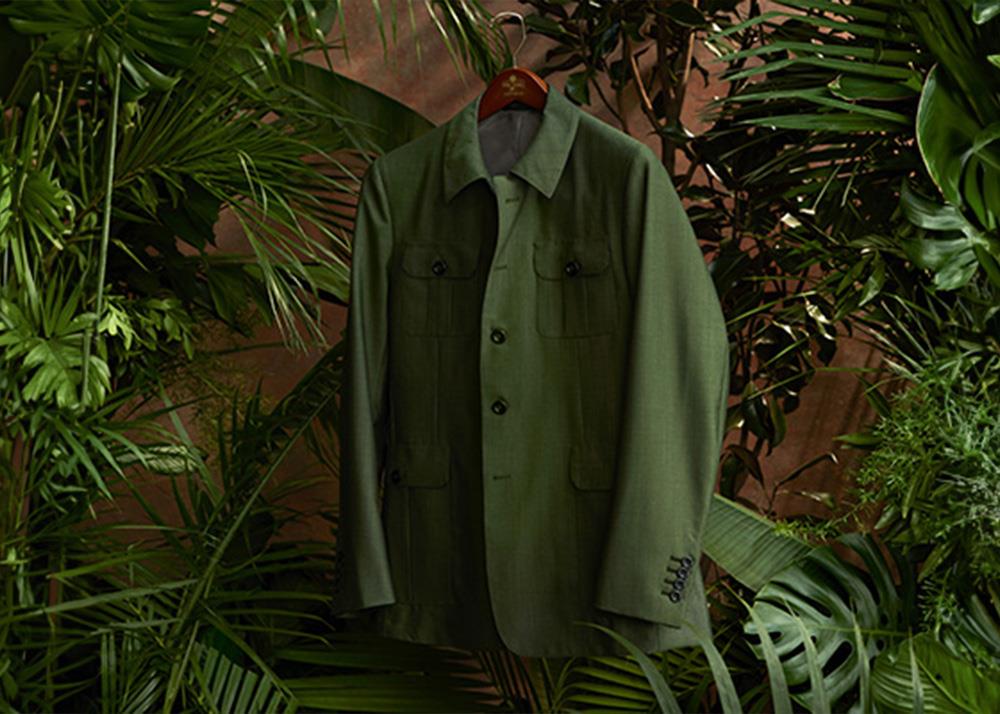Stay Ahead of the Curve by Checking Out Ingenious Style Fads
In a sector as dynamic as fashion, staying in advance includes greater than just following present fads-- it requires an exploration of innovation. Smart textiles, as an example, are transforming garments right into functional masterpieces, while 3D printing is reinventing design procedures with its adjustable, waste-reducing abilities. As sustainability ends up being a keystone, innovations like green products and circular style practices are improving environmental duty - Cape Town Sustainable Fashion. Additionally, the convergence of innovation and style advertises a new age of customer engagement. Just how, after that, can these arising trends redefine the future of fashion, and what ramifications do they hold for brands looking for to thrive in this developing landscape?

Accepting Smart Textiles
Recently, the garment industry has observed a transformative shift with the integration of clever fabrics, a sophisticated advancement that mixes modern technology with fabric. This advancement stands for not just a fusion of looks and performance yet likewise a considerable leap towards sustainability and personalization in vogue. Smart fabrics, additionally referred to as e-textiles, installed innovative electronic devices such as sensing units and conductive strings within the textile, allowing garments to communicate with the user or the atmosphere.
These fabrics are created to check physical specifications, such as heart price or body temperature level, providing real-time health and wellness analytics. Past health applications, wise textiles are additionally being used for flexible garments, which can alter shade or pattern in feedback to ecological stimulations, thus offering a vibrant fashion experience.
Moreover, the development of energy-harvesting fabrics that generate power from motion or sunlight is leading the way for self-sufficient wearable modern technology. This innovation is appealing to environmentally mindful customers and designers intending to decrease the eco-friendly footprint of fashion. As r & d in this area advance, smart textiles are anticipated to end up being progressively widespread, improving the landscape of modern fashion with their multifunctional abilities.
The Surge of 3D Printing
Changing the manufacturing landscape, 3D printing has arised as a game-changer in the fashion business. This advanced innovation has actually enabled designers to press the boundaries of creative thinking, generating complex and personalized garments that were formerly unimaginable. By leveraging electronic layout and additive manufacturing, 3D printing assists in the creation of intricate geometries and patterns, enabling designers to experiment with new textures and frameworks.
A remarkable benefit of 3D printing in vogue is its ability to produce on-demand, lessening waste and decreasing inventory needs. This performance not just optimizes manufacturing processes but likewise enables fast prototyping, enabling developers to bring their visions to life in a shorter duration. Furthermore, 3D printing supports modification somewhat unmatched by traditional methods, supplying distinct designs and individualized fits tailored to private consumer choices.
The surge of 3D printing has actually also democratized style, making it accessible to arising designers that can now fabricate top quality items without substantial monetary investment in traditional production infrastructure. As modern technology remains to advancement, the garment industry is positioned to harness the full capacity of 3D printing, exploring brand-new products and methods that will definitely redefine just how fashion is developed and generated.
Lasting Fashion Developments
As the garment industry faces journalism demand for ecological obligation, lasting fashion advancements have arised at the forefront of transformative modification. The growing recognition of eco-friendly effect has sustained a change in the direction of even more eco-conscious practices and products. Brand names and developers are currently prioritizing sustainability, incorporating techniques that lessen waste and reduce carbon impacts.
One substantial growth is the surge of round style, which highlights recycling and upcycling to expand the lifecycle of garments. This strategy not only lowers waste yet additionally urges consumers to take on an extra mindful technique to clothes consumption.
One more innovation lies in the fostering of innovative dyeing strategies that make use of waterless processes or all-natural dyes, thus reducing the substantial amounts of water and chemicals traditionally used in textile dyeing. Additionally, developments in biotechnology have actually brought about the development of lab-grown natural leather and materials, offering cruelty-free and eco-friendly options to conventional products. Via these introducing efforts, the fashion business is making meaningful strides towards a much more sustainable future.

Tech-Integrated Garments
Tech-integrated clothing represents a revolutionary combination of fashion and technology, improving exactly how people connect with their apparel. This innovative domain name is noted by the incorporation of clever fabrics and ingrained digital parts, boosting both capability and visual allure. From health and fitness trackers installed in sports apparel to heated jackets managed using smart device applications, tech-integrated clothing offers customers unprecedented ease and versatility.
Introducing brand names are driving this trend, focusing on developing garments that react to ecological stimuli or individual commands. As an example, some garments can change shade or pattern in response to temperature level shifts, while others incorporate biometric sensing units to monitor health metrics like heart price or stress and anxiety levels. The smooth combination of modern technology into fabrics likewise reaches ecological sustainability, with initiatives to establish self-cleaning materials or garments that adapt to weather problems, therefore reducing the requirement for several layers.
Moreover, the arrival of wearable innovation is not simply limited to garments yet includes devices like watches and basics eyeglasses, further expanding the range of tech-integrated style. As the industry remains to introduce, the possibility for customization and personalization in garments grows, using consumers unique, tech-enhanced style experiences that cater to their specific requirements and preferences.
Future of Virtual Style
Recently, the future of digital fashion has actually emerged as a transformative pressure within the market, leveraging advancements in electronic innovation to redefine just how fashion is try here developed, experienced, and taken in. By incorporating enhanced fact (AR), virtual fact (VR), and 3D style tools, designers can currently craft immersive and interactive experiences that go beyond traditional style boundaries. Online style permits the development of garments that exist solely in digital settings, providing limitless possibilities for advancement without the constraints of physical production.
This digital change not only presents chances for imaginative expression but likewise addresses sustainability problems inherent in standard style techniques. Cape Town Sustainable Fashion. By eliminating the demand for physical resources, virtual fashion minimizes waste and decreases carbon footprints. Additionally, the increase of digital style aligns with the enhancing consumer need for individualized and one-of-a-kind experiences, as digital garments can be customized and tailored to individual preferences easily

Final Thought
The fashion market's future lies in the integration of sustainable methods and cutting-edge technologies. Online style is positioned to redefine customer interactions.
In recent years, the fashion market has actually observed a transformative change with the integration of smart textiles, a sophisticated innovation that blends technology with material.As the fashion market grapples with the pushing demand for ecological duty, lasting style innovations have emerged at the forefront of transformative change.In recent years, the future of virtual style has actually arised as a transformative pressure within the sector, leveraging innovations in electronic modern technology to redefine just how style is developed, experienced, and eaten. The surge of online fashion lines up with the enhancing consumer demand for unique and customized experiences, as virtual garments can be customized and customized to specific preferences with convenience.
The style industry's future lies in the integration of sustainable practices and cutting-edge modern technologies.
Comments on “Cape Town Sustainable Fashion Week: Highlighting Eco-friendly Innovations”